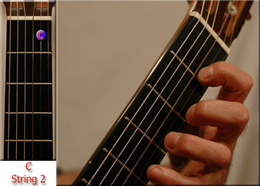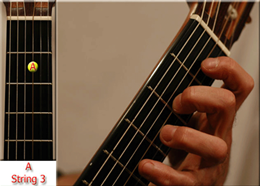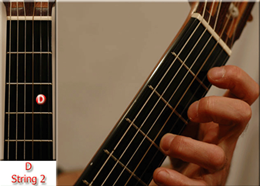Lessons
The intention of these lessons is for existing pupils to use them as a study and practise aid.
They are all played at a metronome speed of 60 beats per minute (bpm).
Make use of the audio track by clicking on the score to be practised and playing along.
There is a one bar count in on all the pieces.
- Open String Sheet uses the top three open strings. The E, B and G.
- Sheet One uses the open G, string three, and the A second fret string three.
- Sheet Two as sheet one but with the open B, string two, added.
- Sheet Three uses the G, open string three, the B, open string two and the C, first fret string two.
- Sheet Four uses the G, A, B and the C.
- Sheet Five uses the G, A, B, C and the open E string one.
Click here to download pdf file of all the lesson sheets above.
Click here to download music for all the above lessons.



